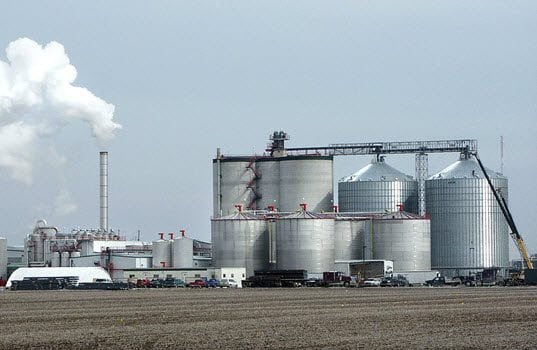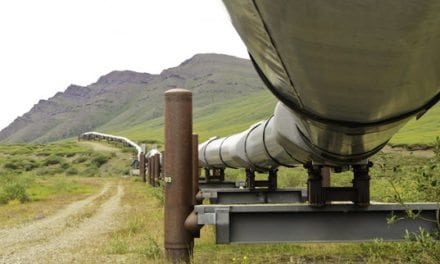By Keith Reid
During a press conference call on May 14, Bob Dinneen, President and CEO, Renewable Fuels Association and Brooke Coleman, Executive Director, Advanced Ethanol Council, discussed a letter from 10 ethanol supporting associations and producers sent to U.S. Environmental Protection Agency Administrator Gina McCarthy in response to a May 1 letter from the American Petroleum Institute and American Fuel & Petrochemical Manufacturers that was also sent to to McCarthy. Here is a quick review of both letters and some take aways from the call. The focus of both letters is the setting, at some point in time, of the 2014 and 2015 renewable fuel volume obligations. As you might expect, the API/AFPM side wants restraint in line with the reduced EPA proposals for 2014, and the ethanol side wants the full volume requirements. Both letters, in full, are provided at the end of the brief (minus footnotes).
In general, neither letter contains any significant surprises to those who have been following the RFS blendwall debate for the past couple of years. In the purest public relations sense, both angle to be technically accurate while downplaying or overlooking contradictory information, nuance or uncomfortable realities.
The ethanol contingent continues to paint “Big Oil” as the villain; ignoring the fact that “big meat” and “big restaurant” have likely caused more damage to the acceptance of ethanol as a fuel in recent years through the debatable “food or fuel” concern. This approach is undoubtedly aimed at pushing any narrative-sensitive buttons with the Obama administration relative to the green elements of the base. However, considering the ethanol industry has stated a goal of getting more petroleum marketers to carry ethanol products, many of whom have had oil “running in their veins” for multiple family generations, is that really a winning message?
An interesting point raised by the ethanol side was the legality of waiving the established RFS volume mandates and the implied purpose of those mandates. As the letter states:
In order to grant a waiver, EPA must determine that “…implementation of the requirement would severely harm the economy or environment of a State, a region, or the United States,” or determine that “…there is an inadequate domestic supply” of renewable fuel to meet required blending levels.
Clearly, the terms “inadequate domestic supply” refer to a shortfall in the amount of physical renewable fuel and available RIN credits that would be needed to meet RFS volumetric requirements.2 However, API and AFPM inappropriately attempt to apply the terms “inadequate domestic supply” to purported constraints on the ability to distribute required volumes.
The supposed lack of infrastructure to distribute larger volumes of ethanol above and beyond the “blend wall” is not a circumstance that EPA may take into consideration when evaluating whether a waiver is justified. In fact, the escalating volume requirements of the RFS were meant to drive investment in the installation of new infrastructure that will enable larger quantities of renewable fuels to be distributed to consumers.
While the oil industry publicly expresses general support for renewable fuels, it would be a stretch to say the industry in any way, shape or form prioritizes those fuels or accommodates them with enthusiasm. In fact, the major brands have regularly made it difficult to impossible for their brand partners to offer higher-blend fuels. It’s hard to be overly sympathetic to the upstream oil producers, as you can trace it to the oil industry’s surrender and adoption of the RFS as part of the Energy Policy Act of 2005. The oil industry opened the door to volume mandates with RFS “1” when facing the MTBE crisis, through closed-door meetings that apparently did not seek feedback from other impacted parties. While that initial mandate was considered manageable, it’s vast expansion two years later in the Energy Independence and Security Act of 2007—RFS “2”—was a different story, but then unintended consequences and all that.*
On the other side, the ethanol industry has been far too willing to downplay legitimate liability issues related to both misfueling and the potential damage to older, uncertified equipment in the petroleum distribution infrastructure. What went unstated in both the call and the letter is that while the mandates are there to force the oil industry to blend an ever increasing amount of ethanol farther upstream, the people who have to sell the resulting products are not Big Oil. Marketers and retailers face the risks and investment costs associated with handling these new products and getting them across the finish line, and their decisions are not dictated by RFA, or for that matter API. At least for now, short of the next regulatory assault, marketers and retailers need to be sold on higher ethanol blends as do consumers, to see the infrastructure development move forward.
Ethanol supply logistics are more robust in agricultural regions than they are nationally. Incentives to support updating the ethanol infrastructure to support E15 or E85 also tend to be more regional than national. The same can be said for the public education and support for ethanol. Then you have issues and/or perceptions relative to higher ethanol blends and small engines. The drop in political support outside the Corn Belt is not helping, either. The price advantage compared to gasoline is great today, but that has not always been the case. It was noted on the call that from a market standpoint the number of vehicles warrantied to use E15 was three times the number of vehicles that require premium, but that is still only about 1/6 of all vehicles on the road and for the marketer that decision short of installing a brand new tank and pumps would often be premium or E15.* A marketer or retailer’s decision on a move to market E15 or E85 has many variables, and those variables are not aligning at the present to generate tremendous enthusiasm to support higher ethanol blends.
Editorially, and we believe generally in line with the perspective of petroleum marketers and retailers, we have no problem with any product that can be sold profitably, has readily available supply and that does not come with considerable regulatory burdens or liability risks. In a perfect world, a consumer that willfully or through ignorance misfuels with a higher ethanol blend in an automobile not rated for that product would be alone in facing the consequences of those actions. However, it has been pointed out at various SIGMA legislative meetings that station owners were sued during the move from leaded gasoline to unleaded by customers that willfully misfueled (up to removing fill pipe blocks) and damaged their catalytic converters.
There are marketers, such as this one, who are sold on ethanol and have built a successful business model integrating higher ethanol blends. There are undoubtedly marketers located outside of the Corn Belt who would love to blend and carry E85 if they could find readily available supply and were certain today’s price advantage will be there tomorrow. Of course, there are branded marketers interested in ethanol blending who face push back from their brands. And there are marketers who are very wary of carrying ethanol products beyond E10 for a range of reasons.
* Note: Modified since publication to provide more detail.









